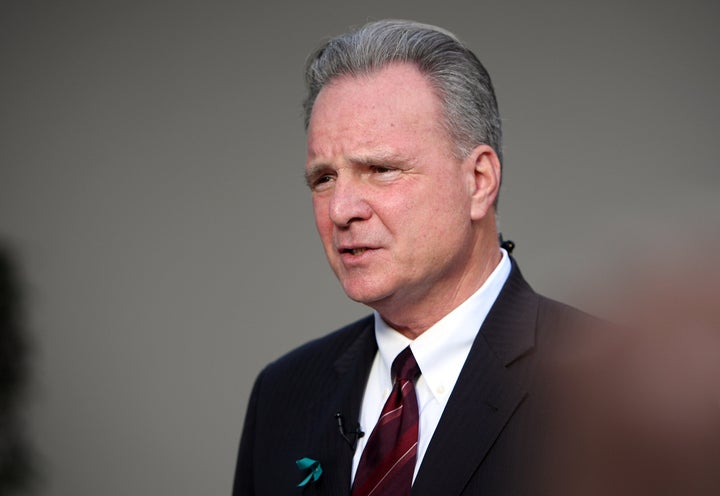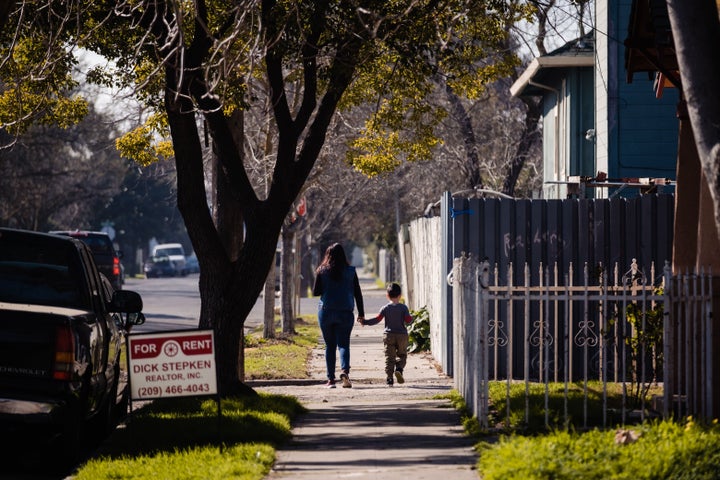Sophia spent 21 years in the foster care system, but considers herself lucky.
Now 24, she has created a solid foundation for herself in Santa Clara County, California, studying for a master’s and mentoring other foster youth. But she’s very aware that not everyone coming out of the foster care system has been able to do the same. “Once the final transition has happened, it’s basically like you have no more support,” she told HuffPost.
Young people age out of foster care between 18 and 21, depending on the state, and are suddenly left to fend for themselves with little to no safety net, making them extremely vulnerable to negative outcomes like homelessness and mental illness. A pandemic and soaring unemployment amplifies these vulnerabilities.
Santa Clara County has a plan — the first of its kind in the U.S. — to help address these struggles. In September 2020, the county launched a basic income pilot giving foster youth aging out of the system $1,000 a month, no strings attached, along with access to financial advice. The 72 recipients selected for the yearlong pilot are all around 24 years old, the age at which most lose access to county services. The monthly stipend is intended to provide a financial cushion to launch their adult life.
Dave Cortese, a former county supervisor and now California state senator, launched the pilot in 2019 after meeting Giselle Huff, founder of the Gerald Huff Fund for Humanity. The foundation advocates for universal basic income (UBI), the increasingly popular idea of giving free money, to everyone, with no conditions as to how the money is spent.

Huff sold Cortese on the idea of running a basic income trial in his county, limited to a specific demographic. He landed on foster youth both because the county has a strong responsibility toward them since they were once wards of the county and because of the unique challenges they face.
Cortese first proposed the basic income pilot to the county board in 2019. When the pandemic hit, he was concerned that enthusiasm for the idea would falter as the crisis unfurled and county budgets were stretched.
But instead, the pandemic hastened the pilot’s introduction. The county approved it in May 2020 allocating $900,000 in total, with $36,000 of that earmarked for monitoring and evaluating the impacts.
“Being a foster child, you’re kind of like an unseen person.”
- Sophia, former foster child
Around 150 young people age out of the foster care system in Santa Clara County every year, cut off from services and forced to make their way in a very expensive county — average rents are around $2,600 a month — often with no emotional or financial support systems to lean on.
Once they leave the system, Cortese said, they can’t just pick up the phone and ask: “‘Hey Mom, I’m having trouble making it, can you help me pay my rent for a month?’ They just genuinely don’t have that.”
It can be incredibly isolating, said Sophia. “Being a foster child, you’re kind of like an unseen person,” she said. “Unless you’re an open book and you’re telling everyone that you met, ‘Oh, I’m a foster child and this happened to me and that happened to me,’ it’s kind of like a silent thing that you keep.”
At almost every stage, young people in foster care are disadvantaged, said Shanta Trivedi, a clinical teaching fellow at Georgetown University Law Center. Not only have they suffered the trauma of being removed from their parents but once in foster care, she said, “there are really unique harms, because many of them are moved from house to house and there’s a lot of instability.”
Those who have been in the foster care system experience high rates of mental health problems, are more likely to come into contact with the criminal justice system, have lower rates of college attendance and generally end up earning less than their peers. Foster youth also have a higher chance of ending up homeless. In Santa Clara County, nearly half of the homeless population under 25 had spent some time in foster care, according to a 2010 survey.
“This [pilot] really resonated with our county because we view foster youth as our children,” said Melanie Jimenez Perez, the Santa Clara County program manager who is leading the pilot.
When she first started contacting beneficiaries, she said she was met with skepticism: “I was reaching out to these youth that didn’t know me, didn’t trust me.” People just didn’t believe that the system was just going to hand out money to them, she said, because previous county programs had involved a checklist of preconditions to receiving funds. “And here we were saying, no, we want to provide you with the funding, so that you can just release some of the anxiety.”
It took far more time than she anticipated to bring people around and establish trust, said Jimenez Perez. But now they achieved that, the pilot has had the additional benefit of strengthening community ties, she said, “because we’re showing these youth that they matter, and that we care and we’re invested in how they’re doing and how they’re going to turn out.”
There is a wide diversity among the 72 foster youth enrolled in the pilot, said Sophia. For some, the money provides financial security to ease anxiety and help them plan a future; for others, it’s a lifeline. “This is like a safety net for me,” she said. It has reduced her stress and allowed her more time to focus on her master’s. “But I know others as well, and I actually mentor one [recipient], and I know that for her this is her only income, so for her it’s strictly about survival.”
While the pilot in Santa Clara is the first basic income program to be aimed at foster youth, there are plenty of similar basic income initiatives across the U.S. giving out no-strings-attached money to help tackle deep-seated problems of poverty and racial injustice. Many of these programs are yielding positive results.
Stockton, California, which gave 125 residents $500 a month for two years, has just announced detailed results from its first year. Researchers found that recipients spent the money on their basic needs — more than a third was spent on food and 11% on utilities. Recipients also reported lower income volatility, decreased anxiety and depression, and, in a striking result that surprised even the program’s evaluators, they managed to get full-time jobs at twice the rate of non-participants in the control group.
Michael Tubbs, the former mayor of Stockton who implemented the trial, said he hoped these results would help put to bed some of the criticisms of basic income. “I don’t want to have another Twitter argument about guaranteed income making people not work,” he said on a press call on March 3. “I don’t want to have another Twitter argument about giving people an income floor [means] they’re going to spend their money on drugs and alcohol.”

It will be a while before detailed data emerges on the impacts of Santa Clara’s trial. The county will monitor the pilot, focusing not only on how the money was spent, but also how much stability and relief it has afforded participants. There’s already anecdotal evidence that it’s helping, said Jimenez Perez: “a lot of [recipients] have been able to get into stable housing, and this is what’s keeping them there.”
She would love for the program to be able to run over two years, to provide longer-term financial security for foster youth as well as stronger data on the outcomes. But it all depends on money. The county is currently working to secure private funding to extend the pilot.
Cortese hopes that Santa Clara’s pilot can also be replicated elsewhere. In February, he introduced a state bill proposing all foster youth in California between the ages of 21 and 24 receive a $1,000 monthly basic income.
Basic income pilots are very welcome, said Trivedi, but to really tackle the problems faced by foster youth, the U.S. needs to urgently reform the foster care system. There are too many children in foster care, she said, because the U.S. errs on the side of removing children from their parents. More than 420,000 children were in foster care in the U.S., according to 2019 statistics, and California has the largest state foster care population in the country.
“One thing I learned, representing parents, is that the underlying issues that often lead to their kids getting removed really have to do with poverty,” said Trivedi. Parents end up in a “horrible cycle,” she said, where they cannot fulfill requirements, such as attending parenting classes, because they are struggling so hard to make ends meet. A wider basic income could have potentially have a real impact on keeping families together in the first place, she said. “Imagine what a monthly guaranteed income could do at this time. And for people who are in the worst position.”
For Sophia, for now, the basic income program is a chance for her and her peers to not fall between the cracks. Still, she is steeling herself for August and the end of the pilot. “I’m kind of on edge about it because the pilot ends and my other services end within a couple months of each other. So where does that leave me? I have no idea. I’m just going to have to figure it out,” she said. “Luckily this is not the first time I’ve had to do it.”
